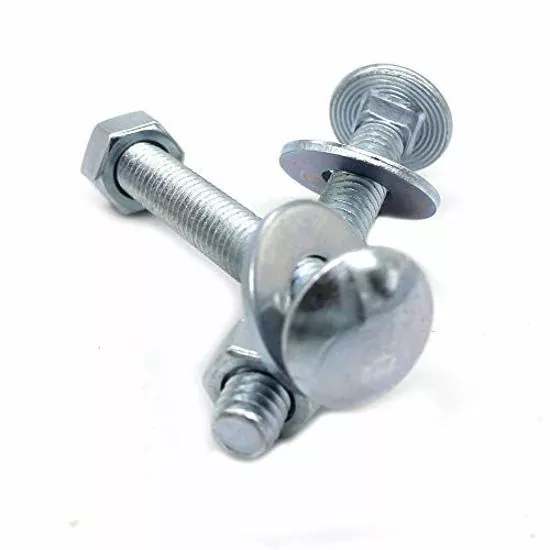What materials
2024-09-17

What materials are carriage bolts made of?
Carriage Bolt materials can vary from stainless steel, brass, and nylon materials. Each material has different properties, making them suitable for specific applications. Stainless steel carriage bolts are resistant to corrosion, making them ideal for outdoor use. Brass carriage bolts are rust-resistant and often used for decorative purposes. Nylon carriage bolts are lightweight and non-conductive, making them ideal for electrical applications.What is the difference between a carriage bolt and a regular bolt?
A regular bolt has a smooth shank, whereas Carriage Bolts have a square or ribbed shank, allowing them to engage better with the wood. Carriage bolts also have a round head, unlike regular bolts that feature a hexagonal head.What is the minimum shank length required for a carriage bolt?
The minimum shank length required for a carriage bolt is twice the thickness of the wood on which it is being fastened.What are the common applications of carriage bolts?
Common applications of carriage bolts include fastening metal to wood, installing wooden beams, and posts in building construction. They are also used in landscaping, providing decorative accents to fences and outdoor furniture. In conclusion, Carriage Bolts are a crucial component in construction, landscaping, and home renovation projects. They come in different materials and sizes to suit different applications. Whether you are a DIY enthusiast or a professional, you can find carriage bolts that meet your needs at Hangzhou TR Industrial Trade Co., Ltd. We are a leading manufacturer and supplier of fasteners, including carriage bolts, and our website is https://www.best-bolts.com. Feel free to contact us at manager@bestcofasteners.com for any inquiries.Research Papers on Carriage Bolts
1) Gardner, William H. Jr., 1998, "Performance of Carriage Bolts in Wood-Based Panels," Forest Products Journal, Vol. 48, No. 11/12.
2) Verdugo, Javier R., and Paul Smith, 2001, "Shear Strength of Carriage Bolts in Fire-Resistance-Rated Construction," Journal of Architectural Engineering, Vol. 7, No. 1.
3) Chui, Y.H., et al., 2004, "Reliability Evaluation of Anchorage Systems in Light-Frame Wood Construction," Journal of Structural Engineering, Vol. 130, No. 6.
4) Shultz, Thomas R., 2010, "Evaluation of Carriage Bolt Fasteners in Wood-to-Wood Connections," Journal of Structural Engineering, Vol. 136, No. 4.
5) Pampanin, Stefano, 2018, "Simulated Winter Storm Load Protocol for Offshore Wind Turbine Foundations," Journal of Renewable and Sustainable Energy, Vol. 10, No. 1.
6) Lindner, Reinhard, et al., 2009, "Investigation of Timber Connections With High Resistance to Lateral Loading," Proceedings of the International Council for Research and Innovation in Building and Construction.
7) Bonner, Scott M., and Todd F. Shupe, 2012, "Influence of Bolt Tightening Method and Wood Species on Connection Behavior," Wood and Fiber Science, Vol. 44, No. 3.
8) Zanuttini, Roberto, and Badewa T. Tunji-Olayeni, 2019, "Behaviour of Bolted Connections in Cold-Formed Steel Channels Under Shear," International Journal of Steel Structures, Vol. 19, No. 4.
9) Fabiyi, J.S., et al., 2011, "Effect of Parent Wood and Post-Steaming on Screw and Bolt Withdrawal Resistance of Wood–Plastic Composites," Composite Structures, Vol. 93, No. 2.
10) Zhao, S., et al., 2020, "Design and Simulation of a Damping Bolt Joint Used in Subway Carbody," Proceedings of the Institution of Mechanical Engineers Part F-Journal of Rail and Rapid Transit, Vol. 234, No. 1.



